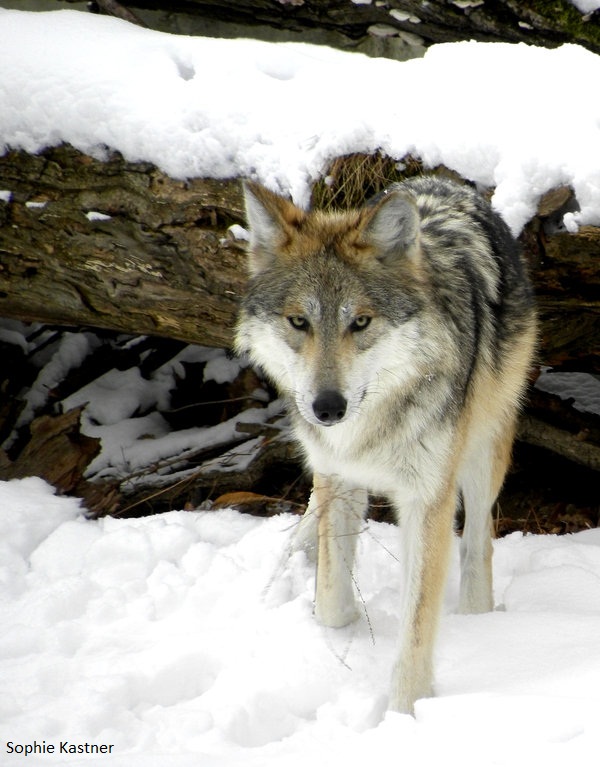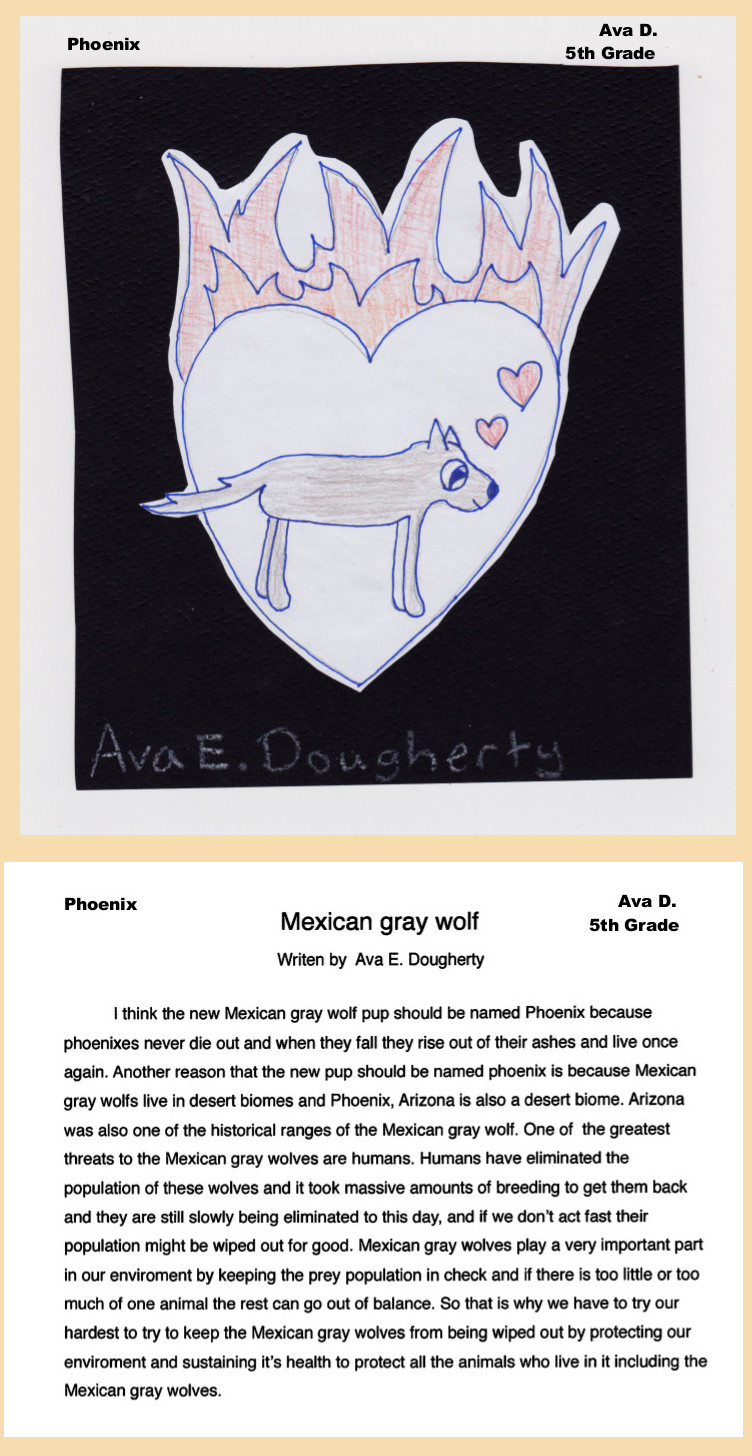15
Sep
In the News: Feds kill wolf that was preying on livestock

The U.S. Fish and Wildlife Service recently killed an endangered Mexican gray wolf, a rarely used tactic for managing an animal the federal government is charged with protecting.
The Arizona Department of Game and Fish said in a monthly report issued Thursday that a female wolf, a member of the Diamond Pack in Arizona, was “lethally removed” last month following a series of confirmed livestock deaths.
John Bradley, a spokesman for the Fish and Wildlife Service, said the female wolf and her pack were responsible for eight livestock deaths since January, a number he called excessive. Members of the White Mountain Apache Tribe had also seen livestock killed by the pack and asked the federal government to remove the animals, Bradley said.
Wolf advocates called the action extreme, saying it is the first time in a decade that the Fish and Wildlife Service has intentionally killed a Mexican wolf. The last such killing occurred during the George W. Bush administration.
The death of the Arizona wolf comes at a particularly uncertain time for the species in New Mexico and Arizona, and its future management by the federal government. While the state of New Mexico has signed off on the new wolf recovery plan, advocates — including several state lawmakers — say it will do more to harm the animal’s population than to ensure its future survival. At last count, there were just 113 in the wild in the two states.
A female pup from the Diamond Pack was found dead in May and is under investigation, according to a Fish and Wildlife report.
Bradley said the federal agency aims to take proactive measures to avoid conflicts between wolves and livestock, but “these measures don’t work in all situations.”
He did not respond to questions about how frequently wolves have been killed by the agency.
“It is our intent to minimize the effects of Mexican wolves on livestock producers,” Bradley said in an email. Trapping and killing the wolf from the Diamond Pack in Arizona allowed the agency to “quickly respond” to the conflict, he said.
Interactions between wolves and livestock are commonplace and are at the core of an ongoing, yearslong debate about how the endangered wolves should be managed on federal land.
The debate largely falls along partisan lines, pitting conservationists against ranchers — who say the predators cut into their livestock profits — and Republican Western states against the federal government and its interpretation of the Endangered Species Act.
But wolf advocates say the Fish and Wildlife Service has taken a turn since January, aligning more strongly with ranching interests and the state governments under the Trump administration than it did under President Barack Obama’s leadership.
“It’s sickening that the Trump administration is so heartless it would gun down Mexican wolves on behalf of the livestock industry,” Michael Robinson, a conservation advocate with the Center for Biological Diversity, said in a statement Thursday. He said the death of the Diamond Pack wolf was a step backward for Mexican wolf recovery.
Wolves that frequently prey on livestock or are considered of particular nuisance are traditionally moved to different locations or removed from the wild and placed in captivity. Bradley said eight wolves have been moved from the wild so far this year, including four adults and four pups that were involved in cross-fostering efforts, in which captive young wolves are introduced into wild litters to increase genetic diversity.
The last time a Mexican wolf was killed, Robinson said, was in the summer of 2007, when a female wolf, with at least one pup, was “baited” and shot by the agency.
The Diamond Pack female is the 15th wolf shot by the federal government since the species reintroduction program began in 1998, he said.
Killing a Mexican wolf without cause is a violation of the Endangered Species Act, a crime punishable by up to $50,000 and a year in jail. Information about those who deliberately prey on the species comes with $58,000 reward from a collection of federal and state funds and grants from nonprofits.
A study published in May in Journal of Mammalogy found that illegal poaching of endangered wolves occurs more frequently than federal agencies know, and that the rate of poaching in New Mexico has been underestimated by 21 percent.
Between 1998 and 2015, 155 Mexican wolves died or disappeared in New Mexico and Arizona, a third of which had “unknown fates,” the study said.
The new management plan for the wolves, drafted in June and set to be finalized in November, says the Fish and Wildlife Service has the right to remove wolves if the population exceeds 380. Critics say this cap is unconventional for species recovery. Coupled with a limited range — the wolves must remain south of Interstate 40 — the cap may ensure the species never thrives, critics say.
The New Mexico Department of Game and Fish has signed off on the plan.
The moves marks a shift for the state. During the Obama administration, the state government and Fish and Wildlife repeatedly clashed over wolf recovery efforts, with the state refusing to grant permits to the agency allowing wolf releases on federal land. In 2016, the federal agency proceeded with the release of young wolf pups, saying it did not need the state’s permission to carry out its duty under the U.S. Endangered Species Act.
New Mexico sued, asking a federal judge to block future releases and to order the removal of the pups from the wild. A district judge granted the injunction, but an appeals court later overturned that ruling.
Meanwhile, a group of 21 Democrats in the New Mexico Legislature wrote a letter to Fish and Wildlife late last month calling the plan “politically driven” and “critically flawed.” It could be fatal for the wolves, they said, urging the agency to increase the cap and the range in which the wolves can roam.
Members of the New Mexico Cattle Growers’ Association also said they were dissatisfied with the new wolf management plan — but their opposition stems from a belief that the target recovery numbers are too high.
This article was published in the Santa Fe New Mexican
~~~~~~~~~~~~~~~~~~~~~~~~~~~~
Call U.S. Fish and Wildlife Service and tell them to stop killing endangered wolves!
Southwest Region Office: 505-248-6911
~~~~~~~~~~~~~~~~~~~~~~~~~~~~
Show your support for Mexican wolves with a Letter to the Editor today!
The letters to the editor page is one of the most widely read, influential parts of the newspaper. One letter from you can reach thousands of people and will also likely be read by decision-makers. Tips for writing your letter are below, but please write in your own words, from your own experience. Don’t try to include all the talking points in your letter.
Letter Writing Tips & Talking Points
“¢ Wolves learn to eat livestock when their carcasses are left on the landscape by ranchers. Wolf reintroduction programs in other areas, including Yellowstone, required ranchers to remove the carcasses of livestock so as to not tempt wolves. Now the wild wolf F1577, or “Phoenix” as kids named her, has been killed because a cow who ate twine and died from it was left nearby.
“¢ The U.S. Fish and Wildlife Service has not killed a wolf blamed with depredations for ten years. Why slide backwards now, when Mexican gray wolves are still critically endangered?
“¢ The U.S. Fish and Wildlife Service should not be killing endangered species like the critically endangered Mexican gray wolf. Their job is to recover the species, not assist their demise.
“¢ Every removal of a wolf from the wild negatively impacts the ability of the species to recover. Only 113 Mexican gray wolves were found in the wild at last official count, making them one of the most endangered wolves in the world.
“¢ It has now been 40 years since the U.S. Fish and Wildlife Service first listed the Mexican gray wolf under the Endangered Species Act, yet the species is still struggling to remain viable.
Make sure you:
“¢ Thank the paper for publishing the article
“¢ Submit your letter as soon as possible. The chance of your letter being published declines after a day or two since the article was published
“¢ Do not repeat any negative messages from the article, such as “so and so said that wolves kill too many cows, but”¦” Remember that those reading your letter will not be looking at the article it responds to, so this is an opportunity to get out positive messages about wolf recovery rather than to argue with the original article
“¢ Keep your letter brief, under 150 words
“¢ Include something about who you are and why you care: E.g. “I am a mother, outdoors person, teacher, business owner, scientific, religious, etc.”
“¢ Provide your name, address, phone number, and address. The paper won’t publish these, but they want to know you are who you say you are.
Submit your letter to the editor of the Santa Fe New Mexican
~~~~~~~~~~~~~~~~~~~~~~~~~~
F1557 was born in 2015 and given the name “Phoenix” in our annual Pup Naming Contest.





